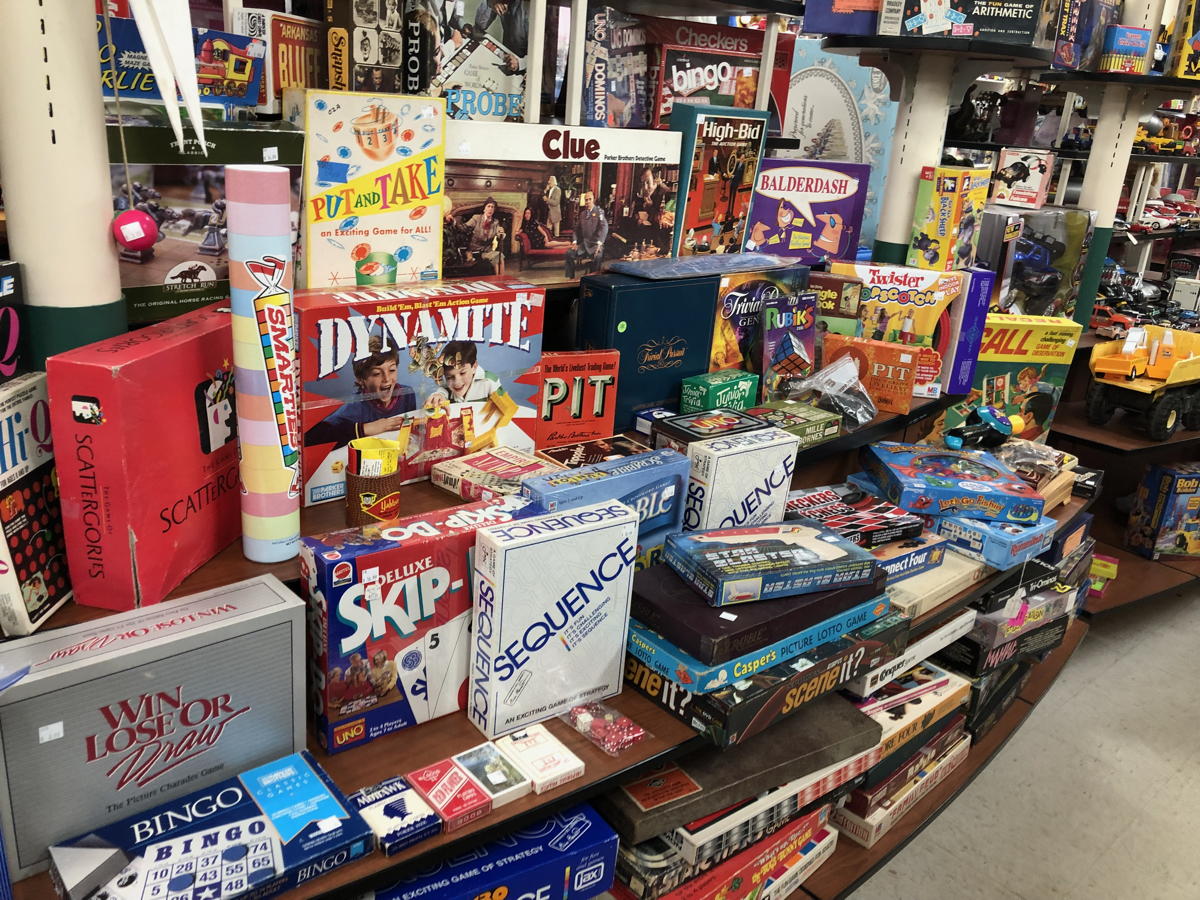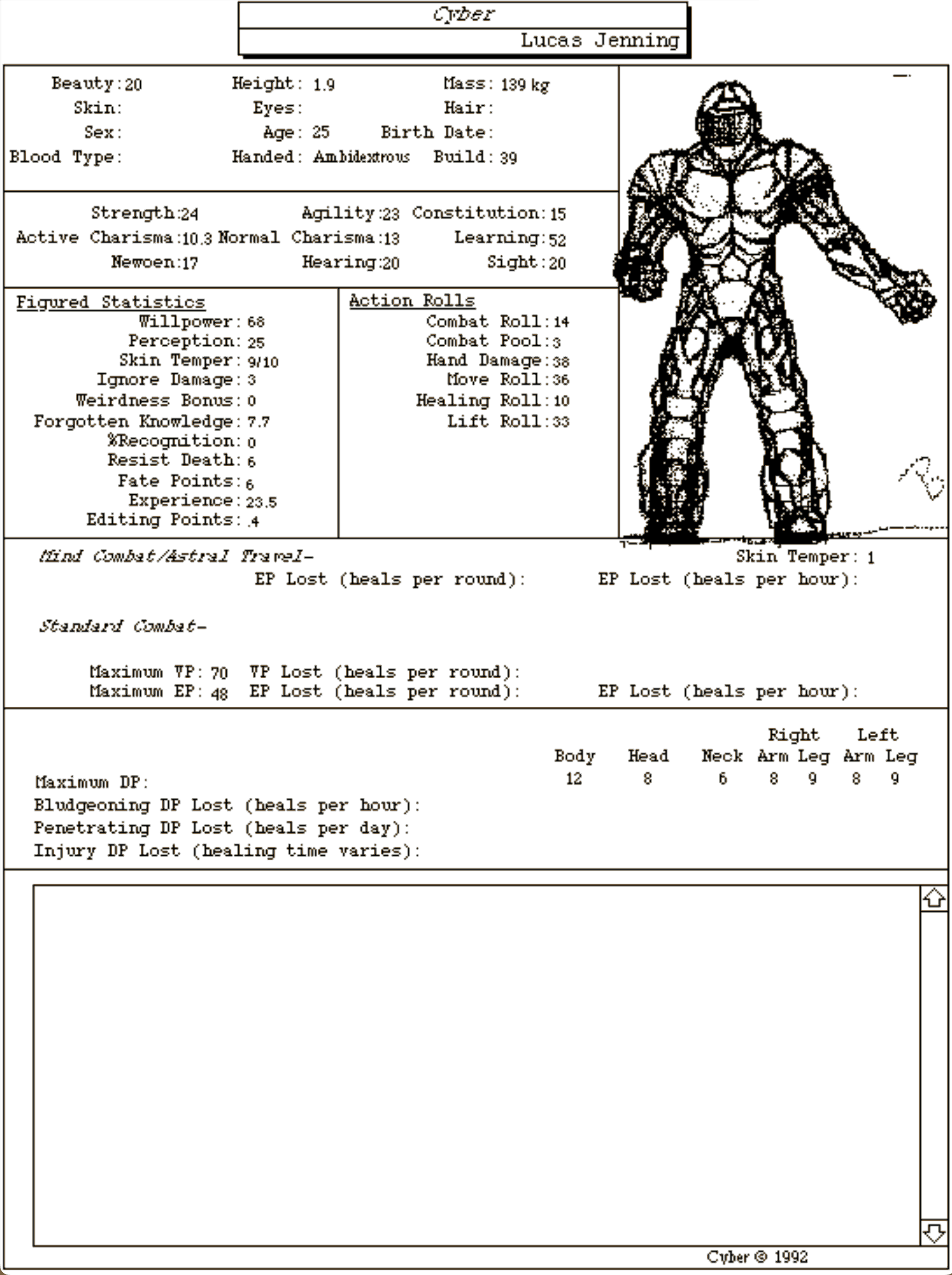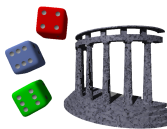Plagiarism and copyright in RPGs
Plagiarism and copyright are two of the most misused terms in gaming. First, the differences. Plagiarism is about attribution. Copyright is about having a monopoly on copying and distributing. Copyright has nothing to do with attribution. If it would be against copyright law without attribution, it would be against copyright law with attribution. You can even plagiarize things that can't be copyrighted or that have returned to the public domain.
Plagiarism is not against the law. It’s just bad form in occupations where the source of ideas is often more important than the ideas themselves, mainly academia and politics. Not only is plagiarism not illegal, it’s not even generally bad form in freewheeling arenas where the focus is on the customer rather than the business. When Microsoft copies Apple, or Apple copies Google, or Frigidaire copies Whirlpool, or Steelcase copies Knoll, that’s not plagiarism. That’s getting better products to the customer.
In my opinion, the latter is where roleplaying games should fall as well. The gaming industry is fortunately still about better games for gamers, by gamers. It’s not publish-or-perish. It’s game-and-live. If there’s one lesson we can learn from the old-school, it’s that gaming rules. Publishing is secondary. Scholarship is tertiary. Gaming is the reason we’re gaming and the reason we’re writing games.
I’ve written before that you can’t copyright ideas, and that collections of ideas is mostly where roleplaying games fall. The notion that one company or other can legally restrict the spread of ideas—in the form of mechanics, or names, or even tables and lists—is a common misconception among gamers.
This question comes up a lot in various forms, although not usually in as obvious a manner as recently on theRPGSite where “What Precisely is plagiarism considered in the OSR?” was misconstrued into questions like “Is it okay to copy a mechanic wholesale?” and “When is it okay to borrow or use a mechanic and not list inspiration?”
To which the very first answer was “Number 1: a mechanic is not copyrightable.”
This is true, but the question never asked about copyright specifically. Although the poster did ask about copying a game rule/mechanic, mechanics aren’t copyrightable, so it really only makes sense as a plagiarism question. In that sense the questioner actually got a lot of things right, including the notion that plagiarism is defined as much by the occupation as by any strict definition. Plagiarism in politics is different than plagiarism in academia is different than plagiarism among novelists.
RPGPundit had the best answer, and it applies both to plagiarism and to copyright:

No one who has read Dangerous Journeys would consider it anywhere near Dungeons & Dragons.
In an OSR context, plagiarism is basically only if you cut and paste material directly from someone else's book. If you take the same mechanic and rewrite it yourself, never mind doing something similar but modified, that's just part of the design school of the OSR.
If you’re quoting someone, you should present it as a quote and attribute the quote. But that’s about it as far as plagiarism goes. And I should repeat here: if you’re quoting so much that it would be a copyright violation, attribution doesn’t suddenly make it not a copyright violation. It just makes it easier for them to find you.
The weirdest answer was that “Self-plagiarism is a thing too. Writers that just copy/paste their old work into a new product without being explicitly clear that buyers are getting a recycled product are an example.”
That writers often repackage the same old material under new covers, and that this is a bad thing, is technically true, but not at all relevant to the question, or even to the first part of the statement!
There is no such thing as self-plagiarism. Plagiarism is copying someone else’s work without attributing them. You never have to attribute yourself. That’s the whole point of calling something plagiarism, that you’re using someone else’s work while making like it’s your own.
While using other people’s ideas can be job-threatening in occupations such as scholarship—places where the path an idea takes is important and where citation counts are a measure of job effectiveness—this isn’t the gaming community as it currently stands. I hope it never is. We should always be about better games rather than about restricting the ideas that make better games.
One of the most common examples that comes up in these discussions, of either avoiding self-plagiarism or avoiding copyright infringement, is Gary Gygax’s strange terminology in Dangerous Journeys. Here’s an example from a recent Grognardia comment:
Oh, and one comment I meant to make on terminology—Gary had to make the Mythus lexicon as different as possible from that of D&D. You can see in the lawsuit how nitpicky TSR got even with the changes. He had to do it to try to differentiate Mythus from D&D as much as possible…
Now, he certainly didn’t “have to” do that. From a legal standpoint, terminology is not copyrightable. An argument could be made that it would be smart to do so, just to avoid frivolous lawsuits from frivolous companies. But in fact, Gygax’s wordiness in Dangerous Journeys is almost certainly just Gygax being Gygax. It’s possible that he was trying to differentiate Dangerous Journeys in the minds of customers but he certainly doesn’t seem to have been trying to avoid lawsuits.
We know this because he literally copied directly from his work for TSR in AD&D. Where this is most obvious is in his lists of things to buy, and the most obvious of those is his list of clothing. While all of the lists have been expanded, Dangerous Journeys has a lot more clothing than AD&D does. And like the AD&D list, the Dangerous Journeys list is in alphabetical order.

There’s so much borrowing going on here TurnItIn would generate a black hole.
Unlike the AD&D list, however, it is in alphabetical order twice. The Dangerous Journeys list exactly reproduces the AD&D list, in order, and then restarts the alphabet for the new stuff that the AD&D list doesn’t have.
Here’s a direct copy of the beginning of each book’s clothing list, with the Players Handbook on the left and Dangerous Journeys on the right:
| Clothing | Clothing Table |
|---|---|
| Belt | Belt |
| Boots, high, hard | Boots, high, hard |
| Boots, high, soft | Boots, high, soft (or fine shoes) |
| Boots, low, hard | Boots, low, hard |
| Boots, low, soft | Boots, low, soft (or shoes) |
| Cap | Cap |
| Cloak | Cloak |
| Girdle, broad | Girdle, broad |
| Girdle, normal | Girdle, normal |
| Hat | Hat |
| Robe | Robe |
The Dangerous Journeys version then goes on to include other items like cloth, capes, and gloves, which are also in alphabetical order. That is, after “robe” it starts over with “cape”, then “cloth”, then “dress”, etc.
Gygax didn’t insert his additional items alphabetically into the already alphabetical Players Handbook list. He took the new items and inserted them alphabetically after the Players Handbook list. There’s no section break, no heading break, just one list of clothing with the alphabet starting over again once the Players Handbook clothing list was done.
Now, lists aren’t copyrightable, this kind of generic list especially. But it does argue against his having used arcane terminology to avoid TSR’s lawyers. Seeing identical lists in the book, obviously copied from his work in AD&D, wasn’t likely to scare TSR’s lawyers off.
The other tables aren’t quite as obvious, but the same pattern is there. The “Livestock” table in Dangerous Journeys is exactly the same as the “Livestock” table in the Players Handbook, except that riding animals are moved to their own table, and “Pig” is put in its correct place alphabetically (it was out of order in the Players Handbook). No new livestock are added, no old livestock are removed, except riding animals getting their own list. It’s the same list, right down to the pigeon and songbird, not animals I normally associate with “livestock”.
Same with “Tack and Harness”. The Players Handbook lists horse armor (barding) under “Tack and Harness”; Dangerous Journeys moves barding off to another table. But otherwise the list is exactly the same: no new items added, no old items removed, the same words used for each item.

That this game required a roll for blood type was not the worst of its sins.
You can also compare the “Socioeconomic Class Table” on page 59 of Dangerous Journeys and page 82 of Unearthed Arcana. Or the “Unknown Device Operation Flow Chart” on page 383 of Dangerous Journeys and the similar flow chart that appears in both first edition Gamma World and the AD&D module Expedition to the Barrier Peaks.
None of this makes Gygax liable or Dangerous Journeys a bad game. It only implies very strongly that he wasn’t doing anything out of the ordinary to avoid prosecution. It’s very unlikely that he used words like “Heka” to avoid TSR lawyers and then went and copied his lists from AD&D directly into Dangerous Journeys.1
It is good that mechanics aren’t copyrightable. They can and should be reused liberally. Attribute as you wish, but personally I don’t want my game books cluttered with attributions. If you choose to roll five dice and throw out the two extremes to create statistics, I don’t need a footnote saying you got that idea from Ernie Blackwell on page 78 of Greymoor Manor vs. the Ents.
Similarly, neither tabular data nor terminology are copyrightable. That said, if you’re copying an entire table exactly and it provides real-world information, that’s where I as a reader might want to see attribution. I’m going to want to know if it was copied from the United States Department of Agriculture or if it was copied from the “Win the War” Cook Book of 1918. The source of that information will let me judge it’s usefulness outside of the game.
For example, in a very old superhero game I wrote, I copied the table for blood types from a Red Cross flyer. I did not attribute that table. I probably should have, just in case someone else wanted to use it.2
But attribution or no, it is always legal to use a mechanic. It is always proper to use a mechanic if it fits your game. Attribution should only be provided if it helps the player. Will they want to know the source of your inspiration? If sourcing just clutters your book, save the inspiration for a blog post or an Appendix N-style list3.
And the Appendix N in Gygax’s Dungeon Masters Guide is a great example of what to do right. The best Appendix N lists, like Gygax’s, are not about providing credit for ideas. They are for providing readers with inspiration to help them better enjoy the game.
Even if you think your mechanic is a new one, don’t attribute it to yourself. Just use it. The idea is probably not new, and whether it is new or not doesn’t matter to the players. Let scholars fifty years down figure that out—and whether it even matters for this particular idea. Your focus as a game writer should be gaming.
I am not aware that even TSR cited these copied tables as proof of either copyright violation or breach of contract in their lawsuit against Game Designers Workshop. Whether TSR did or did not do so, however, this copying was not a copyright violation. Whether it was a breach of contract (which I suspect is where the majority of their lawsuit against GDW and Gygax lay) would depend on the contract and its enforceability.
↑The better answer is that I should never have included that table in the first place. It had nothing to do with the game. I added it because (a) I happened to be thinking about the game when I received the flyer; (b) I had the idea that I could convert it to a game table by using d1000; and (c) I was intrigued that there was a missing decimal point on the flyer, meaning that one in a thousand blood types could be something weird. This would possibly have been a fun idea for a blog post, had the web existed in the eighties. It did not belong in the game.
↑“Appendix N” is shorthand for a list of inspirational books and, nowadays, other media presented usually as an appendix in the back of the roleplaying game. It gets its name from Gary Gygax’s AD&D Dungeon Masters Guide, where the list of inspirational books was literally “appendix N”.
↑
games
- Men & Supermen
- Men & Supermen is a superhero role-playing game designed for a wide variety of characters, both of powers and power levels.
- Mythus text archive
- Texts for the Mythus role-playing game.
- Retrospective: Mythus: James Maliszewski at Grognardia
- “Mythus is the fantasy component of Dangerous Journeys, focusing on an alternate world called Aerth where magic—or magick, in Gygax’s parlance—and monsters are real.”
Ideas
- The Cult of the Cult of Gygax™
- It was never a secret to us back in the day that the staff at TSR played the game themselves, and that they played the game with custom rules and custom worlds.
- What Precisely is plagiarism considered in the OSR? at theRPGsite
- “Is it okay to copy a mechanic wholesale? as long as it's somewhat reworded and proper inspiration credit is given somewhere in the book?”
- Who benefits from alignment charts? at theRPGsite
- “99% of D&D is made up bullshit. The rest is cheeto dust and empty Mt. Dew cans.”
- Why do we need open source games?
- If game rules cannot be copyrighted, and if compatible supplements require no permission, what is the point of an open content game book? Over the next three installments, I’ll look at how open content licenses can make for better gaming.
More gaming copyright
- Why do we need open source games?
- If game rules cannot be copyrighted, and if compatible supplements require no permission, what is the point of an open content game book? Over the next three installments, I’ll look at how open content licenses can make for better gaming.
- Copyright and game rules
- Game rules are specifically exempted from copyright restrictions in the United States. But open content remains useful for gamers, because it allows for easier re-use, easier improvement, and helps improve the long-term viability of a game.
- Game supplements and compatible works
- A copyright-based open license can’t require anything of compatible works unless the compatible work would otherwise be a copyright violation—something that usually isn’t the case. But an open license on a game makes creating compatible works easier, and can make some kinds of compatible works more useful and complete.
- Worlds and characters, and other copyright expansions
- Copyright law is not static. It has a history of expanding both in term and scope. An open content license will protect, tomorrow, uses that today are unrestricted.
- Can I legally use Gary Gygax’s name for my son?
- It’s probably best to talk to a lawyer, or just avoid the issue altogether. Gaming copyright is a very complex issue, and best left to the experts or those with deep pockets. Have you considered naming him Sue?
- One more page with the topic gaming copyright, and other related pages
More Gary Gygax
- Gygax and Lakofka on Wargaming in 1969
- Jim Crossley reports on wargaming’s bright future—and the need for computerization—after the second GenCon. His article appeared in a handful of newspapers over the 1969-1970 holiday season, with quotes from Lenard Lakofka and Gary Gygax.
- On a Cult of Gygax
- The extent and even existence of a “Cult of Gygax” is greatly exaggerated, to the point where even things that directly contradict the theory are interpreted as supporting it. The cult of Gygax is a self-perpetuating myth.
- History is Rewritten by Avid Wargamers
- An article by Jim Crossley appearing over December 1969/January 1970 about the “elite hobby” of wargaming.

